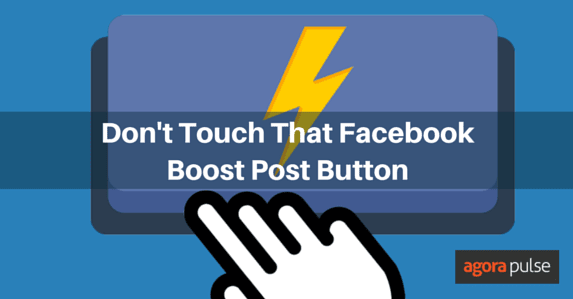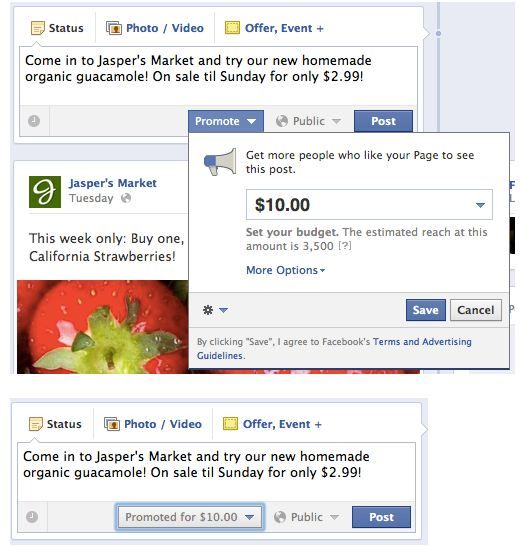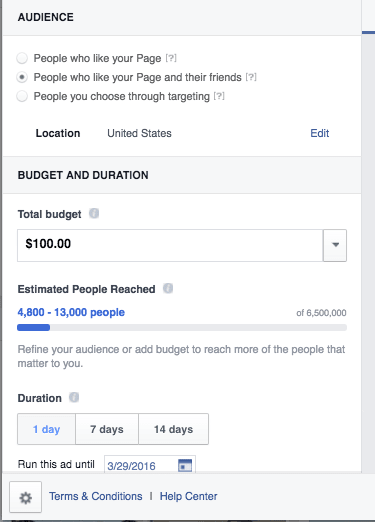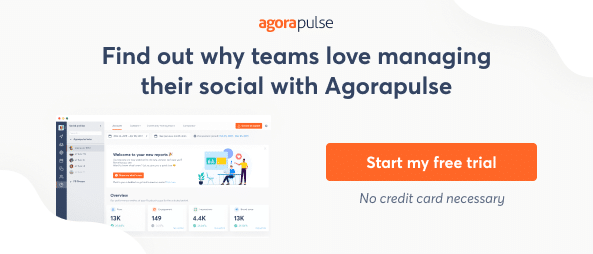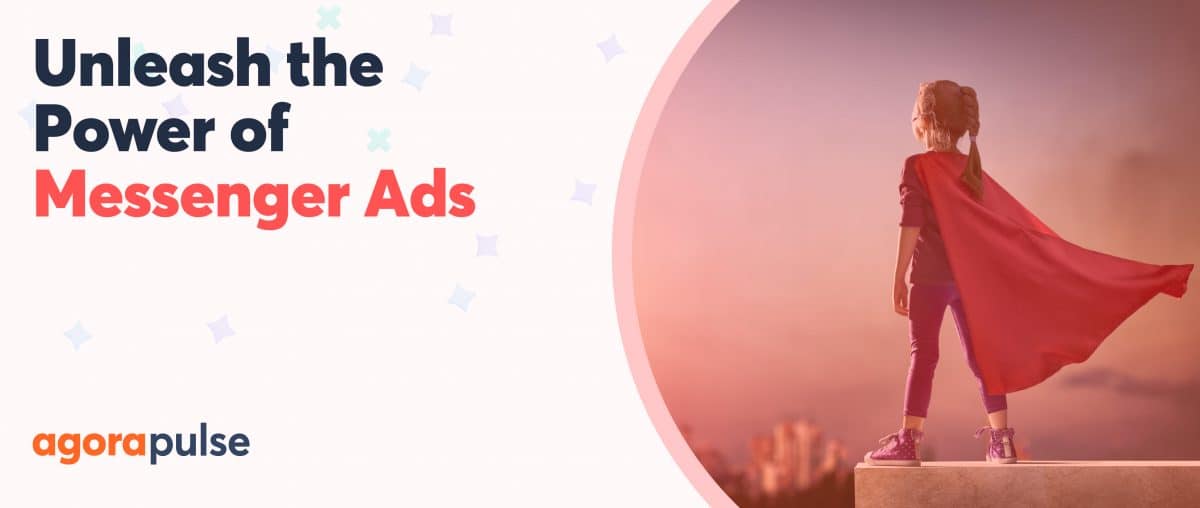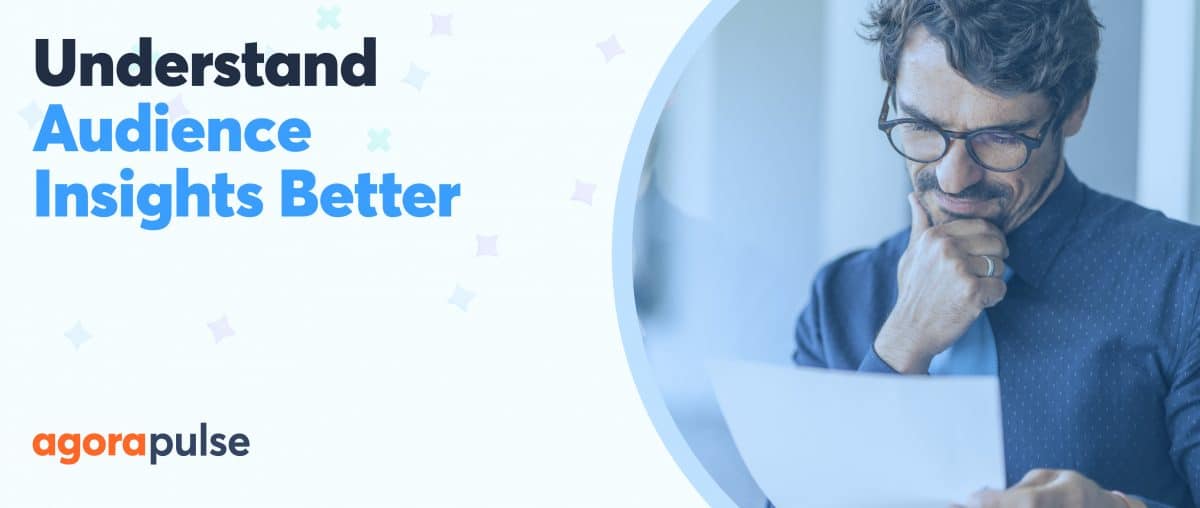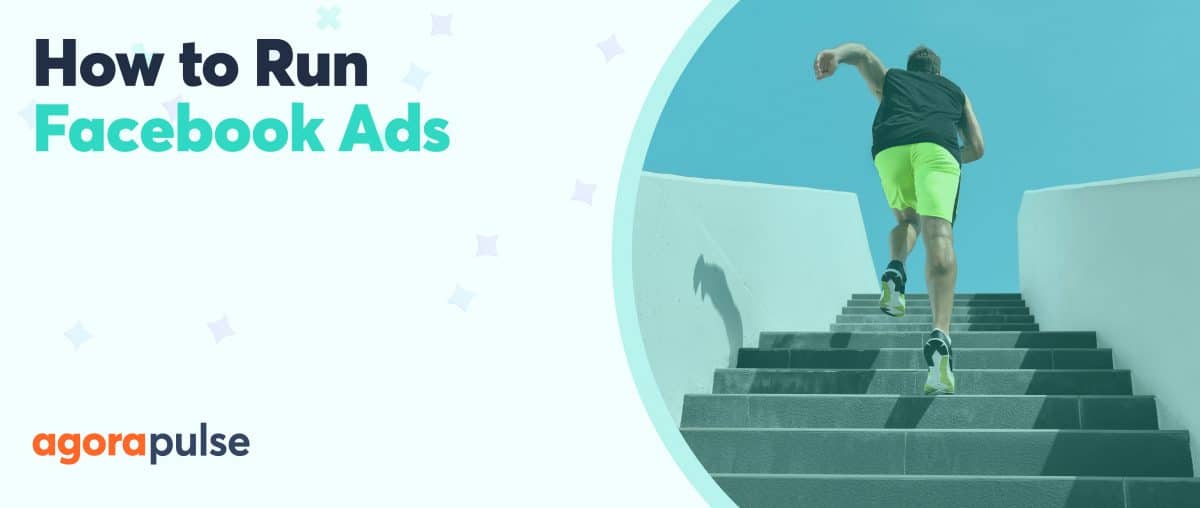Do you have a Facebook page? Have you ever clicked on the Facebook Boost Post button to promote your posts? Uh-oh.
I have some terrible news for you.
Boost Post is a waste of your money. If you’re using it often, you might be throwing hundreds or even thousands of dollars away.
Why?
In this article, I’ll show you exactly what Boost Post is and why you should never, ever use it to promote your content on Facebook.
What Is a Boost Post?
Years ago, Facebook’s ad platform was still in its early stages and looked complicated to many business owners. (Honestly, that perception about Facebook Ads hasn’t changed that much for new social media managers.)
So in 2012, Facebook introduced a super-easy way to sponsor your content: Promote Post. With it, you could now create a Facebook ad campaign without leaving your Facebook page:
A few years later, Promote Post became Boost Post and received more updates. But its essence remained the same: It offers a quick, easy way to spend money and reach more people with your Facebook posts.
As the organic reach on Facebook has collapsed over the past few years, many page owners and social media managers are turning to Boost Post to get their messages in front of their audiences.
But is that a good idea?
What Happens When You Boost a Post
You go to your Facebook page, find a post you want to promote, and click Boost Post.
You then choose your audience, budget, and campaign duration, and click “Boost.”
What you might not know: Facebook just created a new ad campaign in your ad account with the Page Post Engagement objective.
And that’s where things start getting wrong …
Why You Should Not Boost Your Posts
Facebook optimizes your campaigns depending on which Facebook objective you choose.
If you go with Website Clicks objective, Facebook will optimize for link clicks to your website. If it’s Website Conversions, Facebook will analyze everyone who converted already and will try to reach similar people first.
But if you boost a post, Facebook will always, always optimize just for more post engagement (more likes, shares, comments and so on).
So even if you decide to boost a link post, Facebook will still optimize for engagement and not link clicks.
Very often, you’ll see ads receiving a ton of post likes (especially with broad targeting), but just a fraction of those people will click through to your website:

Note: This was a link post promoted with “Boost Post.” You can see it received 2,791 post engagements (mainly post likes) yet just 141 link clicks.
Limited Targeting Options
If you look at Facebook boost post targeting, you have three options:
- People who like your Page | advertising to all your fans,
- People who like your Page and their friends | advertising to all your fans and all their friends,
- People you choose through targeting | advertising to a specific target audience you choose.
Let’s break them down.
1.People who like your Page
If you didn’t do a good job with attracting high-quality page likes (very few business do), you’ll be immediately wasting a fraction of your money.
2. People who like your Page and their friends
No matter if you have super relevant fans or not, you’ll still be wasting your money; the Friends of Fans audience can have up to a million or even more people in it.
So there’s absolutely no way Facebook will be able to find the most relevant people within it. And it’s impossible for you to add an additional layer of interests to make it more specific.
3. People you choose through targeting:
Although you can choose specific interests, the targeting choices are still very limited.
For example, you can’t choose any behaviors. You can’t use Detailed Targeting to outreach to people who are interested in both Interest A and Interest B either. Plus, you can’t include or exclude your page fans or Custom Audiences from your targeting.
Now you see what I’m talking about?
No matter which targeting option you choose, you will be wasting your money. Whether it’s 10% or 30% of your budget, it can add up to thousands of advertising dollars thrown away.
And finally, you can’t control the placements of the ads you pay for.
No Control Over Facebook Ad Placements
When you’re boosting posts, you can’t choose where you want to show your ads. The default option is always Desktop News Feed and Mobile News Feed.
You must know that Facebook does a ton of optimization automatically for social media managers. Most of the time their algorithms will try to find the cheapest way to achieve an objective, even if it might destroy your overall campaign results.
For example, if you selected multiple countries for your target audience, Facebook might eventually push most of the budget to the cheapest countries that are getting the cheapest clicks. The same happens with gender, age, and, yes, placement too.
So if you choose to advertise on both Mobile News Feed and Desktop News Feed, Facebook might push as much as 99% of your advertising budget to mobile (because it’s far less expensive than Desktop News Feed), regardless of whether it’s getting you leads or sales:
From my experience, even if a website is responsive and mobile-friendly, the conversion rate on mobile is usually 2 to 3 times lower than on desktop.
Mobile conversion tends to be lower because it’s just not as convenient to fill in all the sign-up or purchase information on handheld devices.
If the website is not mobile-friendly, it can be even worse.
And so if you choose both placements (something you can’t control with “Boost Post”), you’ll probably be getting a ton of mobile traffic that doesn’t convert at all or converts very badly.
What Can You Do About It?
Well, stop using Boost Post! That’s a good start.
No matter which audience you want to reach—page fans, friends of fans, or people by interests—you can do that much more effectively by creating ads in the Ads Manager or Power Editor.
Even if it takes you 10 minutes longer, you’ll be able to choose the most suitable campaign objective, select much more relevant target audiences, and have complete control over where to show your ads.
Combined, these things will result in a lot of advertising money saved and a much better ROI on your campaigns.
In the end, your goal should not be just to get more engagement, but to get people to take an action (visit your website, sign up, register, or buy a product) and you should do everything you can to achieve those results in the most effective way.
Learn More About Facebook Ads
Sign up now for a FREE demo.
